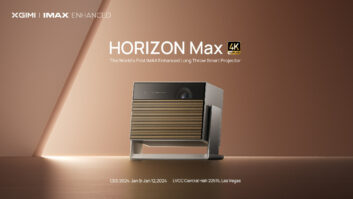The HomePlug Powerline Alliance has begun working on a powerline-network standard whose speed, coverage and quality of service will exceed that of the current 200Mbps HomePlug AV standard.
The alliance declined to publicly target a speed goal, saying development work is in the early stages, but alliance members expect it to exceed 400Mbps and pointed out that video-service providers want 1Gbps speeds, which would allow for many more simultaneous high-definition video streams than the current standard supports. The alliance said it would get more specific in a few months.
In a conference call, association members targeted a finalized standard sometime in 2008 with sample chips available in 2009. The standard’s interim name is HomePlug Next Generation AV.
Current-generation HomePlug AV delivers physical-layer speeds of 200Mbps and average real-world throughputs of 70Mbps to 100Mbps, enabling distribution of two to three MPEG-4 HDTV streams over powerlines simultaneously with Internet browsing. A total of 28 products have been certified to date by the association as conforming to the HomePlug AV standard. Most of the products are available in Europe, where brick, stone and metal walls degrade wireless-network speed and range.
During the conference call, the alliance said its wants to exceed a physical-layer speed of 400Mbps. Oleg Logvinov, the alliance’s chief strategy officer, pointed out that HomePlug submitted a 400Mbps technology to the IEEE for use in the proposed IEEE 1901 standard, which would accelerate powerline-network speeds and enable incompatible HomePlug and HD-PLC powerline-network products to coexist on a network without interference. “Our next step is greater,” Logvinov said. The 1901 standard is expected to be approved by an IEEE working group in July and submitted to the full IEEE for a vote later in 2008.
After the call, alliance president Rob Ranck pointed out that service providers are looking for 1Gbps speeds to allow for multiple simultaneous HD video streams over powerlines from a central set-top box or DVR.
The Next Generation AV standard will be developed “with a path to integrate with other technologies,” Logvinov added. He was referring to plans by the International Telecommunications Union (ITU) to develop a unified standard, called ITU-T G.hn, for transporting HD video and other content over three types of wires in the home: powerlines, phone lines and coaxial cable. A final spec, possibly due in 2009, would eventually enable one device to connect to a home network via all three physical media, but before then, advocates foresee add-on bridges that would, for example, enable a powerline-equipped device to talk to a phone-line-equipped device.
During the conference call, the alliance also said it will also step up marketing this year of its low-speed HomePlug Command and Control (C&C) 1.0 standard, which enables powerline-based whole-house control of lighting, appliances, climate control and other devices from centralized control centers within the home or from remote sites via PCs and cellphones. The standard is also designed to control energy consumption.
C&C products could be available as early as late this year, said Ranck. Development of the physical and media access control layers is finished, and a protocol layer will likely be finished in the next few months, he said. At around the same time, the alliance will have developed a certification program to certify the interoperability of C&C devices. C&C chips are already available, although the as-yet unfinished protocol would have to be burned to the chips before inclusion in products, he noted.
LG is already embedding the technology in several appliances, and trade groups that developed the wireless ZigBee and Z-Wave home-control technologies are interested in building bridges to C&C, the alliance said.













